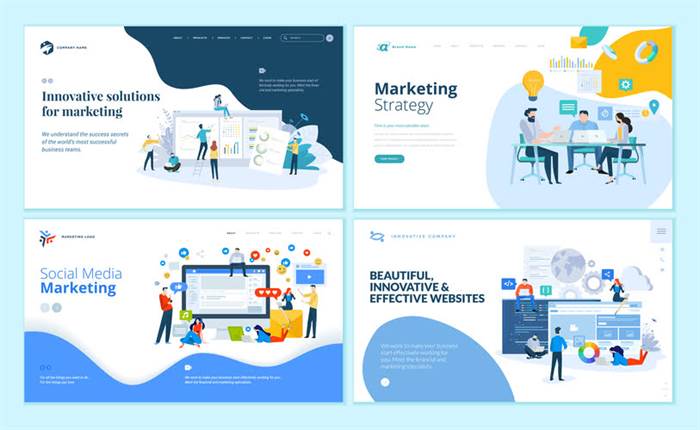Developers must now enter maintenance mode and begin practicing any procedures necessary to address issues identified by end users. The design stage is required before moving on to the primary developer stage. SDLC can be used to develop or engineer software, systems, and even information systems. It can also be used to develop hardware or a combination https://www.globalcloudteam.com/ of both software and hardware at the same time. All three of these methods are popular since they allow for extensive iteration and bug testing before a product is integrated with greater source code or delivered to market. The agile methodology prioritizes fast and ongoing release cycles, utilizing small but incremental changes between releases.
This demand can be primarily linked to the agile model’s flexibility and core principles. By its core principles, we mean adaptability, customer involvement, lean development, teamwork, time, sustainability, and testing, with its two primary elements being teamwork and time (faster delivery). So rather than creating a timeline for the project, agile breaks the project into individual deliverable ‘time-boxed’ pieces called sprints. This model prioritizes flexibility, adaptability, collaboration, communication, and quality while promoting early and continuous delivery. Ultimately, all this ensures that the final product meets customer needs and can quickly respond to market demands.
What are the 7 stages of the systems development life cycle?
System assessments are conducted in order to correct deficiencies and adapt the system for continued improvement. An output artifact does not need to be completely defined to serve as input of object-oriented design; analysis and design may occur in parallel. In practice the results of one activity can feed the other in an iterative process. This may involve training users, deploying hardware, and loading information from the prior system. Conduct with a preliminary analysis, consider alternative solutions, estimate costs and benefits, and submit a preliminary plan with recommendations. Improve chances of on-time, on-budget completion as users update in real-time, avoiding surprises during development.

This method results in several release cycles, during which each iteration is tested, bugs are resolved, and input from stakeholders is gathered. It entails iterative development, constant improvement, and adaptability in the face of change. You needn’t worry any longer as the search for answers to the latest security issues is over.
Testing
The big step is creating a detailed project plan document and work breakdown structure that outlines the requirements. In business, any systems which are implemented into the operations must go through several processes before they are fully integrated into the company infrastructure. The conceptual design stage is the stage where an identified need is examined, requirements for potential solutions are defined, potential solutions are evaluated, and a system specification is developed.

Not just limited to purely technical activities, SDLC involves process and procedure development, change management, identifying user experiences, policy/procedure development, user impact, and proper security procedures. Books such as David Avison and Guy Fitzgerald’s Information Systems Development and Alan Daniels and Don Yeates’ Basic Systems Analysis, delve into the intricacies of information systems development lifecycles. This article will provide an in-depth analysis of the history, definition, phases, benefits, and disadvantages, along with solutions that support the system development life cycle. SDLC products from software vendors promise organizational clarity, modern process development procedures, legacy application strategies, and improved security features.
SDLC Phase 3: Systems Design
The SDLC helps guide engineers as they
develop systems according to complex rules as outlined by the development team. Maintenance involves updating an existing software product to fix bugs and ensure reliability. It can also include adding new features or functionality to a current product. Operations refer to the day-to-day running of a software product or service, such as performing backups and other administrative tasks. From a research standpoint, it is crucial to monitor the system to gain an understanding of whether it is benefitting the business as expected and how the performance is influencing workflow.
- Ideally, at this stage, there should be no
other problems, and the end user should be happy with the system. - Take time to record everything, which leads to additional cost and time to the schedule.
- Rigorous testing and quality assurance are performed to ensure the system’s accuracy, performance, and adherence to the design requirements.
- By anticipating costly mistakes like failing to ask the end-user or client for feedback, SLDC can eliminate redundant rework and after-the-fact fixes.
- Take a look at our top 10 best practices for software testing projects for more information.
- It helps to define the problem and scope of any existing systems, as well as determine the objectives for their new systems.
Developers clearly know the goals they need to meet and the deliverables they must achieve by a set timeline, lowering the risk of time and resources being wasted. SDLC provides a number of advantages to development teams that implement it correctly. Developers must now move into a maintenance mode and begin practicing any activities required to handle issues reported by end-users. During the testing stage, developers will go over their software with a fine-tooth comb, noting any bugs or defects that need to be tracked, fixed, and later retested. Furthermore, developers will often create a software requirement specification or SRS document.
SDLC Phase 6: Acceptance, Installation, and Deployment
During the analysis phase, a programmer develops written requirements and a formal vision document via interviews with stakeholders. Introducing a new clinical information system or component, including electronic health record systems, is a major undertaking for healthcare organizations. Approaching their introduction without strategy or planning will likely result in failure and disaster, sometimes causing harm to patients. In this chapter, we describe the system development life cycle (SDLC), a common framework for the introduction for new information systems in organizations.

A testing phase is incorporated into each development stage to catch potential bugs and defects. Each stage has a separate project plan and takes information from the previous stage to avoid similar issues (if encountered). However, it is vulnerable to early delays and can lead to big problems arising for development teams later down the road. During the Analysis stage, the focus is on gathering and understanding the requirements of the system. This includes conducting interviews, studying existing processes, and identifying stakeholders’ needs.
Significance of System Design
The information system will finally be built and incorporated into its environment. After clearing this stage, the program is considered market-ready and may be distributed to any end user. With web application security add an extra layer of protection to your application and stop DDoS attacks and data breaches before they even occur. But in theory, it illuminates the shortcomings of the main waterfall model by preventing larger bugs from spiraling out of control. An SDLC’s system analyst is, in some ways, an overseer for the entire system. They should be totally aware of the system and all its moving parts and can help guide the project by giving appropriate directions.
This results in more iterations and many more tests compared to other models. Projects pass through four main phases again and again in a metaphorically what is systems development life cycle spiral motion. Thus, systems analysts should have an even mix of interpersonal, technical, management, and analytical skills altogether.
Importance Of Systems Development Life Cycle
Customers in remote rural areas are finding difficulty to access the bank services. It takes them days or even weeks to travel to a location to access the bank services. Too much time spent attending meetings, seeking approval, etc. which lead to additional cost and time to the schedule. The robust process to control and track changes to minimize the number of risks can derail the project unknowingly. If the data is identical between the manual process and the system, then the system is deployed. For example, define a nomenclature for files or define a variable naming style such as camelCase.
